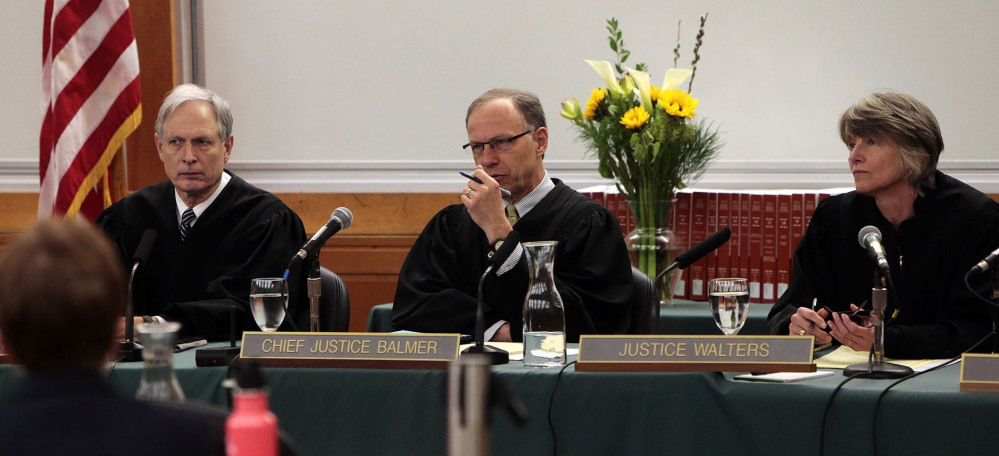PORTLAND, Ore. — The American legal system offers few moments as dramatic as an eyewitness to a crime pointing his finger across a crowded courtroom at a defendant.
The problem is that decades of studies show eyewitness testimony is only right about half the time – a reality that has prompted a small vanguard of police chiefs, courts and lawmakers to toughen laws governing the handling of eyewitnesses and their accounts of crimes.
Reform advocates say procedures long regarded as solid police work, from bringing a witness to a crime scene where he might see a suspect in handcuffs to the subtle encouragement of a detective during a police lineup, can fundamentally alter what someone believes they saw.
A QUESTION OF PROCEDURE
“It’s not the case that eyewitnesses are inherently unreliable,” said Gary Wells of Iowa State University, who has researched the field of eyewitness identification since the 1970s. “But we can make it better by cleaning up the procedures around it.”
Prosecutors, however, have led the charge against the changes, as statistics and scientific studies reveal the gaps in eyewitness testimony, including how it has led to wrongful convictions, at a time when technology and other forensic analysis are being given greater weight.
In Maryland, legislators this week passed a bill that overhauls the state’s eyewitness identification procedures, but not before the prosecutor for Baltimore County testified against it – part of a feeling by prosecutors across the country that their profession is under attack.
“What we see is a fairly organized and aggressive attack on all forms of evidence prosecutors use to get convictions,” said Scott Burns, executive director of the National District Attorneys Association.
Burns said criminal defense attorneys, groups that try to get wrongful convictions overturned and the American Civil Liberties Union are part of a bloc that is selecting outlier cases of prosecutorial misconduct or witness mishandling and applying that to the entire system.
It’s that attitude that gives advocates of reform migraines, said Rebecca Brown, state policy reform director for the Innocence Project, which pursues exonerations of the wrongfully convicted.
“We joke in the office that it’s like climate change,” she said. “There’s settled science, and then there’s this group of people denying it.”
Whether in a laboratory or at a police station, studies have shown that eyewitnesses are about half as likely to choose the correct suspect out of a lineup as they are to choose some combination of the innocent fillers or no suspect at all when the correct one is present.
The U.S. Supreme Court had a chance to establish a national standard for eyewitness testimony when it handled a 2012 case from New Hampshire. The court instead delegated that responsibility to the states, which could choose to overhaul their laws or do nothing at all. Most chose the latter.
Advocates of reform seek several major changes to the way police and prosecutors operate.
They want “blind” administrators of lineups – people who don’t know who the suspect is, and a lineup that doesn’t unfairly single out a suspect. They want police to record an eyewitnesses’ degree of confidence in his identification, and they want any photo lineups of suspects to be randomized.
In Texas, the state allowed for the possibility that agencies might need to cut the law to fit their individual needs. Law enforcement agencies must either adopt the Law Enforcement Management Institute of Texas’ guidelines for lineups composed of people or photographs, or submit their own plan that conforms to the law.
TESTIMONY GUIDELINES
In Oregon and New Jersey, the state supreme courts implemented stringent guidelines for the treatment of such testimony, and another seven states, from Connecticut to North Carolina, along with a number of cities have overhauled their treatment of eyewitness testimony.
A case that’s playing out in Oregon, advocates say, highlights the problems.
Two women, both white, peered through their rain-streaked car window at a crowded street corner in 2007 and saw a black man fire a handgun four times. One person fell dead and the shooter ran at their car. They screamed. They made it a half-dozen blocks before police stopped them and asked them what they saw.
Not much, they said, and what they did see was blurred by the rain, the dark and their own terror.
But two years later, after seeing Jerrin Hickman in the courtroom seat normally reserved for defendants, one of the women identified him. “Oh, my God,” she said, hyperventilating, according to appellate filings in the murder case. “That’s him, that’s him, that’s him.”
Their testimony was unanimously dismissed as implausible by the Oregon Court of Appeals, which found that a host of factors that have rarely been given weight in American criminal law unfairly twisted the recollections of the two women and their confidence in their own testimony.
For one, studies have shown racial differences between witness and suspect makes identification much more difficult. Second, the girls hadn’t given any indication of their confidence in their choice of suspect initially, so it was impossible to later judge its value against their later certainty.
And most important to the suspect’s attorneys, the first time the girls saw the suspect since the shooting was when he was seated at the defense table, which was “egregiously suggestive.” The case is under consideration by Oregon’s highest court, the first challenge to the state’s new law regarding eyewitnesses.
Multnomah County, Ore., district attorney Rod Underhill said law enforcement’s top priority is justice, but he is worried about a one-size-fits-all policy.
Send questions/comments to the editors.



Comments are no longer available on this story